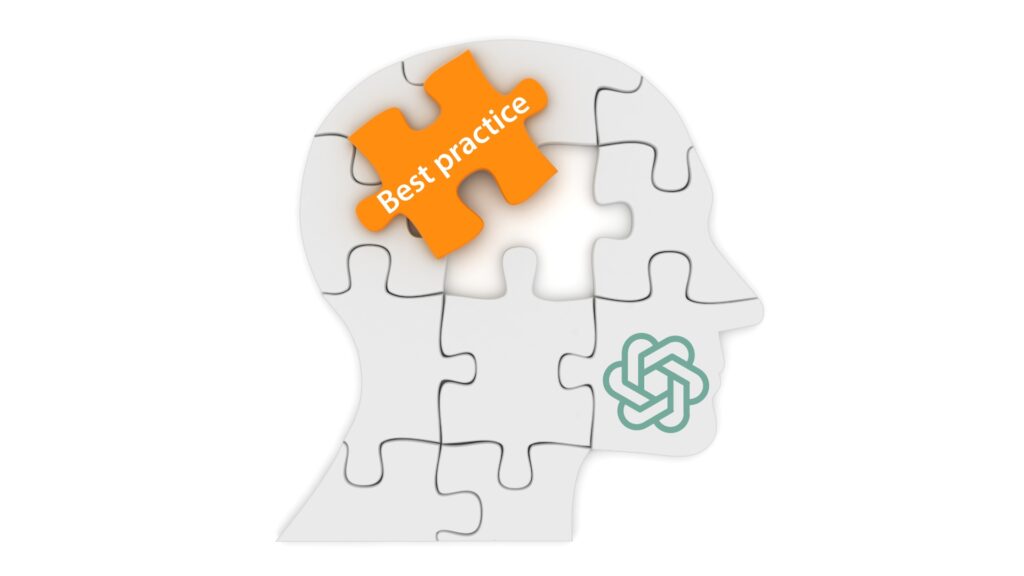In the realm of digital communication, moderating content with the assistance of AI, such as ChatGPT, has become increasingly prevalent. However, as with any technology, issues can arise that may hinder its effectiveness. This article delves into common errors encountered while using ChatGPT for moderation purposes and provides detailed steps to resolve them.
What is Error in Moderation with ChatGPT?
Errors in moderation when utilizing tools like ChatGPT typically involve inaccuracies in how the AI interprets and filters user-generated content on digital platforms. These errors can manifest as false positives, where the AI wrongly flags benign content as inappropriate, leading to unnecessary censorship, or as false negatives, where offensive or harmful content is mistakenly overlooked and left on the platform.
Both types of errors can degrade the user experience, with false positives frustrating users through undue restriction of their expression, and false negatives allowing potentially damaging content to circulate freely.
Additionally, contextual errors present a significant challenge in AI moderation. ChatGPT, despite its advanced capabilities, may struggle with understanding the nuances of language, such as sarcasm, idioms, or cultural references, often leading to misinterpretation and incorrect moderation actions.
These errors can be exacerbated by biases present in the training data, which may cause the AI to act unfairly towards certain groups or topics. Addressing these issues requires continuous refinement of the AI’s algorithms and training datasets, coupled with human oversight to ensure fairness and accuracy in moderation processes.
How to Fixes Errors in Moderation with ChatGPT

1. Misclassification of Content
Problem: ChatGPT may occasionally misclassify benign content as inappropriate or vice versa. This can lead to frustration among users whose messages are wrongly blocked or inappropriate content slipping through.
Solution: To address this, refine the training data and adjust the sensitivity settings of the AI. Incorporating a feedback loop where moderators can flag misclassifications helps improve accuracy over time. Additionally, integrating a manual review process for borderline cases can help mitigate errors.
2. Lack of Contextual Understanding
Problem: ChatGPT might struggle with context, which is crucial in moderation. For example, it may not distinguish between sarcastic and serious comments effectively.
Solution: Enhance ChatGPT’s training with datasets that include varied contextual scenarios. Implementing dual-layer moderation, where AI handles initial filtering and human moderators tackle complex cases, can also be effective.
3. Handling Multilingual Content
Problem: If your platform hosts a multilingual community, ChatGPT may encounter difficulties in languages other than the one it was primarily trained on.
Solution: Utilize a multilingual version of ChatGPT, or supplement it with language-specific models. Regular updates and training with diverse language datasets will enhance its performance across different languages.
4. Technical Glitches
Problem: Like any software, ChatGPT may experience technical issues such as failing to load, process requests, or unexpected downtimes.
Solution: Regular maintenance and updates are crucial. Ensure that your integration of ChatGPT is up to date with the latest software versions. Setting up system monitoring to alert you to issues in real-time can help you address them promptly.
5. Privacy Concerns
Problem: In moderation, respecting user privacy while analyzing communication can be challenging. There might be concerns about how data is handled and stored.
Solution: Implement stringent data handling and privacy policies. Ensure that ChatGPT is configured to comply with local and international data protection regulations, such as GDPR. Anonymizing user data before processing can help mitigate privacy issues.
Best Practices for Effective Moderation with ChatGPT

- Continuous Training: Regularly update the training data to include recent examples of misuse, slang, and evolving language use. This keeps the model effective and relevant.
- Hybrid Moderation Systems: Combining AI with human oversight ensures that moderation is both efficient and sensitive to nuances that AI might miss.
- User Feedback Integration: Allow users to report errors in moderation, providing direct feedback to refine and improve ChatGPT’s algorithms.
- Transparency: Be transparent about the use of AI in moderation processes. This helps build trust and understanding among users.
- Scalability and Flexibility: Design your AI moderation system to be scalable and flexible to adapt to increasing volumes of interactions without a drop in performance.
Troubleshooting Advanced Issues
For more complex issues that require deeper technical interventions, consider the following steps:
- Debugging the Model: Regularly check the AI model’s outputs against expected results for anomalies. Use tools that allow you to see the decision-making process of the AI to identify where errors may be occurring.
- Enhancing AI Capabilities: Consider integrating additional AI tools such as sentiment analysis or natural language understanding enhancements to improve the accuracy of ChatGPT in moderation scenarios.
- Professional Consultation: For persistent or highly technical issues, consulting with AI experts or reaching out to OpenAI for support can provide solutions tailored to your specific needs.
Conclusion
The conclusion of deploying AI tools like ChatGPT in moderation scenarios underscores a dual theme of continuous improvement and adaptability, which are pivotal for maintaining a dynamic and safe online environment.
AI, while transformative in its capability to manage vast amounts of data and interactions, is not a flawless solution. It requires a vigilant approach to both deployment and ongoing management to fully harness its potential.
Firstly, continuous improvement is essential. The digital landscape is perpetually evolving, with new forms of communication and expression emerging regularly. As such, moderation tools powered by AI must be dynamically updated to comprehend and react to new linguistic patterns, slang, and evolving community standards.
This is not just a technical requirement but a strategic one, ensuring that AI tools remain effective and relevant. Regular updates to the AI model’s training data, incorporating recent examples of both acceptable and unacceptable interactions, can significantly enhance its accuracy and responsiveness.
Secondly, adaptability is crucial. Online communities and platforms often experience shifts in user behavior and cultural trends. AI systems, therefore, must be designed to quickly adapt to changes in volume and type of content without degradation in performance. This involves not only scalable infrastructure but also flexible AI models that can be fine-tuned as community norms shift.
Moreover, the role of human oversight cannot be overstated. While AI can handle a large volume of content at scale, human moderators are essential for interpreting complex cases where cultural nuance or contextual understanding is required. This hybrid approach ensures that moderation is both efficient and sensitive to nuances, fostering a balanced interaction between automated processes and human judgment.
Transparency with users about how AI is used in moderation also helps in building trust and credibility. Users are more likely to feel secure and respected if they understand how their interactions are moderated and have avenues to appeal or provide feedback on moderation actions.
In summary, leveraging AI like ChatGPT in moderation processes demands a commitment to ongoing improvement and adaptability to technological and cultural changes, ensuring that moderation remains both effective and fair in the ever-evolving digital dialogue.

